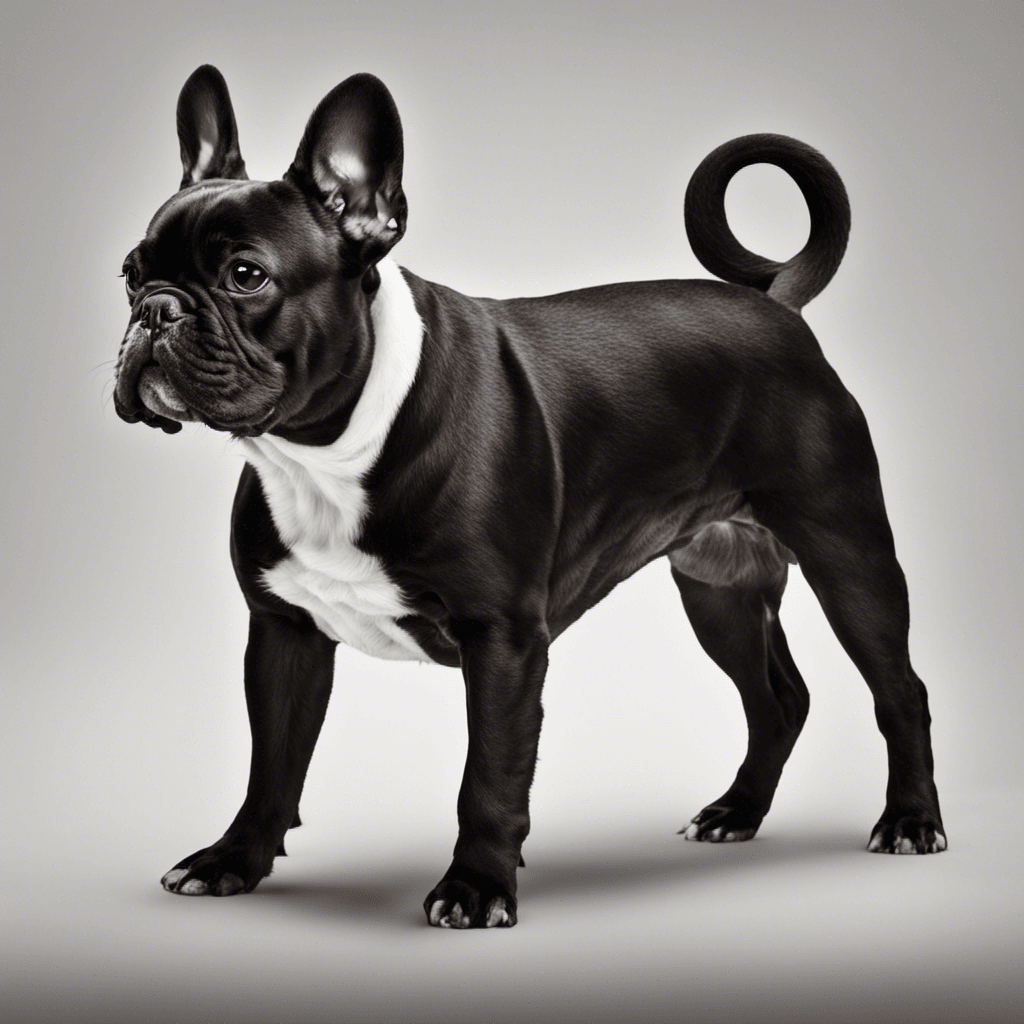Did you know that French Bulldogs use over 30 different facial expressions and body postures to communicate? These lovable pups may be small in stature, but they have big personalities and unique ways of expressing themselves.
I am a French Bulldog enthusiast and owner. I have spent an immeasurable amount of time carefully observing their subtle expressions and gestures. In this article, I’ll share my insights. This will help you understand your furry friend’s thoughts, emotions, and needs.
Key Takeaways

- Body language is crucial for communication with French Bulldogs.
- French Bulldogs rely heavily on nonverbal cues to express their thoughts, emotions, and needs.
- The position of the ears, tail, and eyes can reveal important information about a French Bulldog’s emotions.
- Tail wagging and eye contact have significant meanings in French Bulldog body language.
Why Understanding French Bulldog Body Language Matters

Frenchies rely heavily on nonverbal communication since they can’t speak our language. By learning to interpret their body language, you can:
- Strengthen your bond and connection with your Frenchie
- Identify when they’re feeling happy, anxious, or uncomfortable
- Prevent misunderstandings and potential behavior issues
- Create a safe, comfortable environment that meets their needs
Think of it like learning a new language—the language of Frenchie love! Ready to dive in? Let’s start with the basics.
Decoding French Bulldog Facial Expressions
One of the most expressive parts of a French Bulldog’s body is their face. They have round heads, squished snouts, and adorable wrinkles. Frenchies can show a wide range of facial expressions that convey their emotions. Here are some key things to look for:
Eyes
- Soft, relaxed eyes indicate a calm, content Frenchie
- Wide, alert eyes may show excitement or alertness
- Squinty, blinking eyes often mean your pup is feeling sleepy or very relaxed
Mouth
- A relaxed, slightly open mouth is a sign of a happy Frenchie
- Lip-licking or yawning can indicate stress or nervousness
- Showing teeth or snarling is a warning sign to back off
Ears
- Perky, forward-facing ears show interest and engagement
- Ears pulled back against the head suggest fear or submission
- Rapidly swiveling ears may indicate your Frenchie is trying to locate a sound
To understand how your French Bulldog is feeling, pay attention to their facial expressions and react accordingly. But the communication cues don’t stop there!
What Your French Bulldog’s Body is Saying

In addition to facial expressions, Frenchies use their whole body to express themselves. Here are some common body postures and what they mean:
| Body Posture | Meaning |
|---|---|
| Relaxed, loose body | Calm, approachable |
| Lowered head, hunched back | Fearful, anxious |
| Upright stance, stiff body | Alert, possibly aggressive |
| Front paw raised | Unsure, assessing a situation |
Your French Bulldog’s tail can also tell you a lot about what they’re feeling:
| Tail Position | Meaning |
|---|---|
| High, stiff wag | Excitement, alertness |
| Low, fast wag | Submission, friendliness |
| Tucked under body | Fear, stress |
| Relaxed, neutral position | Calm, content |
By observing your Frenchie’s overall body language, you can get a more complete picture of their mood and intentions. But what about when they make noise?
French Bulldog Vocalizations and Sounds

While Frenchies may not be as vocal as some other breeds, they still use a variety of sounds to communicate. Common French Bulldog vocalizations include:
- Barking can indicate excitement, alarm, or a request for attention
- Growling is usually a warning sign to back off
- Whining may mean your pup is anxious, in pain, or wants something
- Snorting and snoring are completely normal for this brachycephalic (flat-faced) breed
Pay attention to the pitch, volume, and context of your Frenchie’s vocalizations. A playful bark during a game is very different from aggressive barking at a stranger!
Using Body Language to Communicate With Your Frenchie
You can use your own nonverbal cues to communicate with your French Bulldog now that you know how to interpret their body language. Some tips:
- Get down on their level to appear less threatening
- Use a relaxed, friendly tone of voice and facial expression
- Offer a treat or toy to signal you want to interact
- Respect their space if they show signs of fear or discomfort
With patience and practice, you’ll soon be having full “conversations” with your Frenchie without saying a word!
Frequently Asked Questions
How can I tell if my French Bulldog is happy?
Some signs of a happy Frenchie include a relaxed body posture, soft eyes, and a gently wagging tail. They may also seek out affection and playtime.
Why does my French Bulldog stare at me?
Making prolonged eye contact can show affection, be a way to get attention, or communicate a need. Observe their other body language cues to interpret the stare.
Should I punish my French Bulldog for growling?
No, growling is a valuable communication tool that tells you your dog is uncomfortable. Punishing the growl may make them skip this warning sign and bite. Instead, calmly remove them from the situation.
Can French bulldogs understand human emotions?
Studies show that dogs can pick up on human emotions by observing our facial expressions and body language. Your Frenchie may come comfort you when you’re feeling down!
Wrapping Up
Learning to speak your French bulldog’s language is essential for being a good pup parent. Understand their unique communication style and body language cues. This will help you build a stronger bond with your furry best friend.
Every dog is an individual. Take the time to learn your Frenchie’s specific quirks and preferences. With love, patience, and plenty of treats, you’ll communicate like natives in no time!
Do you have any funny stories about your French Bulldog’s body language? Share them in the comments below!
Hi, I’m Alex! At FrenchyFab.com, I share my expertise and love for French Bulldogs. Dive in for top-notch grooming, nutrition, and health care tips to keep your Frenchie thriving.





